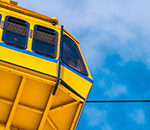Kodachrome revolutionized the world of photography, bringing color into a world that was previously seen in black in white. In the mid-1930’s Kodak began marketing the film to the public as a 16mm movie film. The popularity of the film created a demand for the film to be produced in other formats. Shortly after, Kodachrome was available not just as movie film, but also in 35mm and 120 for use in still cameras. The use of the slide film was wide spread and stayed at the forefront of color photography for decades to follow. Known for its vibrant color saturation, sharpness, and archival qualities Kodachrome will go down in history as one of the notable film processes. Watch the documentary here:
As digital cameras began to dominate the market, the use of film began to dwindle. In 2009, Kodak announced production of Kodachrome would be ceased. Nostalgic photographers began scooping up and shooting the film. Because of the dated technology used to process the film, only one lab in the world had the equipment and experience to process the discontinued rolls. Florida State University alumni, Xander Robin, made the 16-hour drive from Tallahassee, Florida to Dwayne’s Photo in Parsons, Kansas to document the end of a legacy, when Dwayne’s announced that they would process their last roll of Kodachrome on December 31st, 2010.
Robin says he discovered Kodachrome a few weeks after Kodak ended production of the film in 2009. His grandfather had reels of home movies shot on 8mm Kodachrome,
“The color still looked vivid, the film quality remained superb. I shot some Ektachrome, a reversal film similar to Kodachrome. It looked pretty good… but it lacked the vivid, brilliant warmth of the Kodachrome reels.” Robins fascination with the film grew right at the time he was beginning the documentary film chapter in his film school studies. “For my documentary project at the FSU Film School, it was an amazingly opportune time to document and preserve Kodachrome to commemorate its final year of processing. Making the 16-hour drive to Parsons, Kansas with two close friends and crewmembers was a draining exercise in determination, yet completely worthwhile once we entered that processing room. “

Captured on Kodachrome 64

Captured on Kodachrome 64

One of the last shots ever captured on Kodachrome 64
The film crew, consisting of Xander Robin, Adam Carboni, and Taylor Cohen shot the film on Sony’s professional grade XDCAM HD line of gear.
Like This Article?
Don't Miss The Next One!
Join over 100,000 photographers of all experience levels who receive our free photography tips and articles to stay current:





some great images
we miss you kodachrome